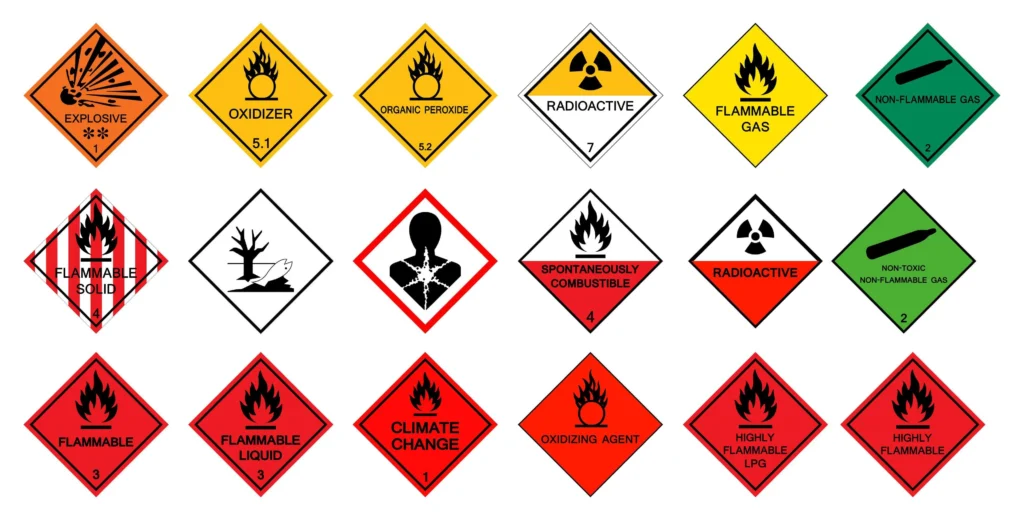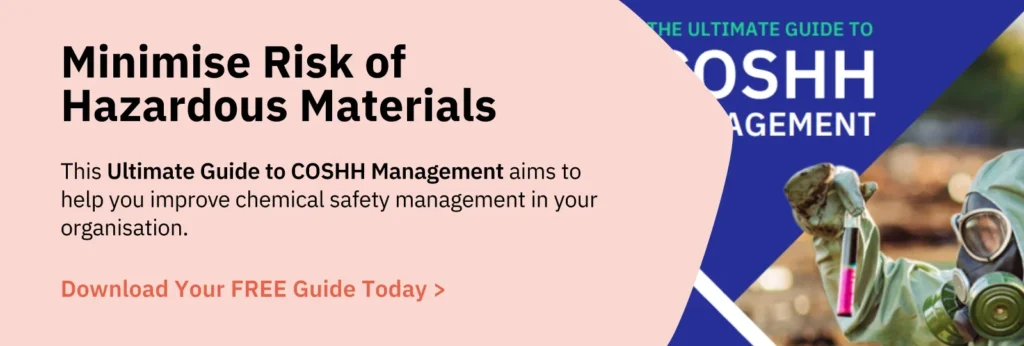
DOT Hazard Classification Meaning & Definition
What is DOT Hazard Classification?
The United States Department of Transportation (DOT) has specified clear rules for shipping hazardous goods and materials. The DOT has divided these materials into nine different categories, known as ‘hazard classes.’ Transporting hazardous materials (hazmat) is often a risky activity that poses major risks.
In case of an oversight or a mistake on the part of the shipping company, there is a serious risk of an incident that could endanger people’s lives. That is the reason why the Department of Transportation has a set of strict regulatory requirements that shippers must abide by for transporting hazardous materials by sea, air, or ocean.

Warning Symbol Vectors by Vecteezy
Why Is DOT Hazard Classification Important?
DOT hazard classification is important as it offers clear guidelines for classifying different hazardous materials and for taking appropriate steps to mitigate the potential hazards or risks that they pose.
Title 49 from the United States Code of Federal Regulations provides a clear requirement for hazmat shipping companies to assign a DOT hazard class to the materials that they ship.
If the materials are not properly classified or identified, the shipping company might expose itself to potential risks, including a range of criminal and civil penalties that might arise because of safety incidents. In some cases, the shipping company might end up losing its shipping license.
In case of an incident, first responders within the country can identify the hazardous material within the first 15 minutes of arriving on-site. This is possible due to the use of placards that clarify the division and the class of the material.
On the placard, the division number or the hazard class must appear at the bottom of the placard. Each label contains a unique pattern and colour theme, as well as an image.

DOT Class Breakdown
Here is a detailed breakdown of the different DOT classes.
Hazard Class 1: Explosives
All explosive materials fall under Hazard Class 1 and feature an orange label. They include:
- Materials that can cause a mass explosion
- Materials that pose a projection hazard
- Materials that pose a fire hazard
- Explosive materials that don’t pose a blast hazard
- Insensitive explosives that can lead to a mass explosion hazard
- Insensitive materials that don’t pose a mass explosion hazard
Hazard Class 2: Gases
Gasses are denoted by two colours: light red for flammable and green for non-flammable gases. They can be divided into three categories:
2.1 Flammable gases
2.2 Non-flammable or non-toxic gases
2.3 Toxic gases
Hazard Class 3: Flammable Liquids
Flammable liquids are denoted by a dark red colour on the placard, and they have a flashpoint of 140°F or less. These can be divided into three categories:
3.1 Flammable liquids with a flashpoint that’s below 0°F
3.2 Flashpoint that’s between 0°F and 73°F
3.3 Flashpoint between 73°F and 141°F
Hazard Class 4: Flammable Solids
Denoted by different colours and patterns including white, blue, and red, there are three main divisions in this category:
4.1 Flammable solids, such as match sticks
4.2 Spontaneously combustible substances
4.3 Substances that can combust while wet
Hazard Class 5: Oxidizing Substances
Denoted by either yellow or a mix of red and yellow, hazard class 5 primarily consist of oxidizing substances and organic peroxides. These include:
5.1 Oxidizers
5.2 Organic peroxides
Such substances are thermally unstable and if exposed to oxygen, often release excessive amounts of oxygen and heat.
Hazard Class 6: Toxic and Infectious Substances
Hazard class 6 is divided into two main classes:
6.1 Toxic substances (also poisonous substances)
6.2 Infectious substances
Hazard Class 7: Radioactive Materials
This focuses mainly on radioactive materials. Apart from uranium or plutonium, there are other radioactive materials too, such as smoke detectors or x-ray equipment.
Hazard Class 8: Corrosive Substances
Any corrosive substances are listed under this category. This includes all acids or bases.
Hazard Class 9: Miscellaneous
Any materials that pose a hazard during transportation fall under this category. These materials also fall under DOT regulations. For instance, Formalin containers fall within this category.
What About Incorrect DOT Classification?
In case hazardous materials are assigned an incorrect DOT classification, it could result in a series of non-compliance issues and could result in serious regulatory repercussions. This could also result in more complicated delays, including government fines, penalties, or even jail time.
The DOT also requires all participants within the supply chain to undergo mandatory hazmat training. In some cases, additional training might be required, including IATA, IMDG, or 49 CFR.
Use EcoOnline To Manage DOT Classifications for all Hazardous Materials
EcoOnline’s Health and Safety Software allows businesses to easily manage DOT classifications for all hazardous materials used and transported within the business. The software is highly modular, allowing businesses to integrate new modules as per their requirements, making it an excellent choice for organizations that put safety first.



